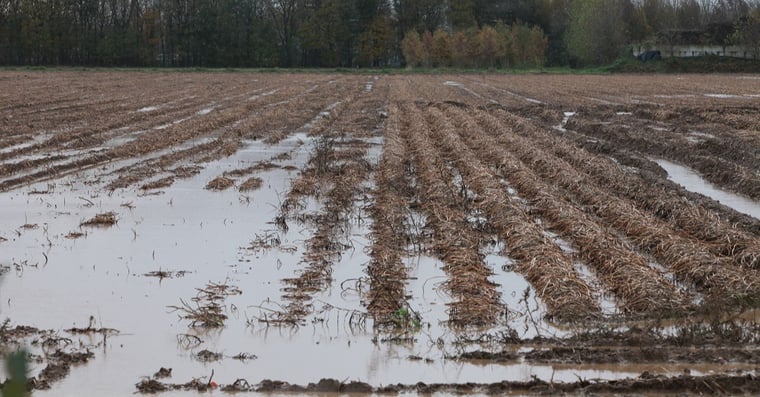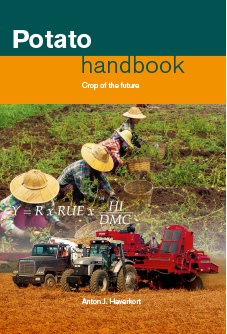
A higher CO2 concentration of the air, a factor in climate change according to its definition in the Potato handbook, increases the internal CO2 concentration within the leaf. As a result, the stomata close somewhat to adapt to the new situation. Somewhat more CO2 enters but stomatal closure is less than proportional to CO2 increase of the air, so less water transpires than before.
For potato crops transpiration is reduced by 11 percent when the CO2 concentration increases with 170 ppm. When at this increase of CO2 concentration the yield increases by 29 percent and the water use is 11 percent less, then the resulting water use efficiency is (0.29 : 0.89 =) 1.45. In other words, the water is used 45 percent more efficiently.
Increase of water use efficiency
A current potato crop e.g. yields 50 t/ha which is equivalent to 5.000 g/m2 which has transpired 500 mm of water, equivalent to 500 liters/m2. The 500 mm of water is from rainfall and/or irrigation. The water use efficiency of this crop is (5.000 g/m2 : 500 liters/m2 =) 10.0 g/l tuber fresh matter. Under dry warm growing conditions with low relative humidity, this may be as low as 8 g/l, under cool moist conditions up to 12 g/liter is possible. The yield of the current 50 t/ ha crop in the next 40 years will have increased with 29 percent to 64.5 t/ha, which is equivalent to 6.450 g/m2. The crop transpires 11 percent less water, 445 l/m2 rather than 500 l/m2. The new water use efficiency is (6.450 g/m2 : 445 l/ m2 =) 14.5 g/l. Indeed this is the 45 percent increase of the water use efficiency of potato as expected in the next 40 years. In subtropical lowland environments with winter crops, where the yield increase due to higher CO2 level is cancelled by the yield decrease associated with the shorter growing season, the 11 percent advantage for the water use efficiency still holds.

In winter, yields stagnate as the higher daily growth rate is annulled by fewer growing days. Following partial stomatal closure at higher CO2 levels, transpiration is reduced and so is water use (WU) over the season, leading to an increase in water use efficiency (WUE) with some 11 precent over the next 40 years. In summer, yields increase at reduced water use, leading to a substantial increase in the water use efficiency.
Want to keep reading about the effects of climate change on water use, tuber yield and pests and diseases?
Find it in Chapter 4 of our Potato handbook, a global Potato University in one book!
Buy your copy today and get a one-year free subscription to PotatoWorld magazine.

